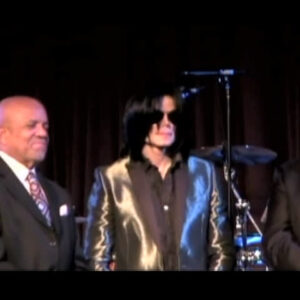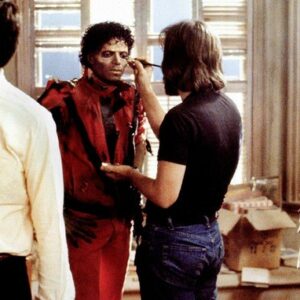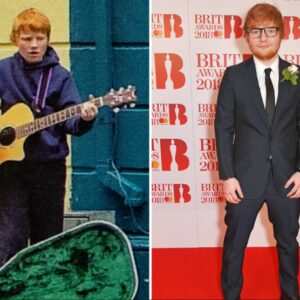There are few artists who have left an indelible mark on both the music and fashion industries like Mary J. Blige. With her raw talent and unapologetically real persona, Blige not only reshaped the sound of R&B but also emerged as a fashion icon who consistently pushed boundaries. From her oversized jackets and baseball caps to fur coats and thigh-high boots, Blige’s fashion choices mirrored the evolving complexities of urban life, femininity, and self-empowerment.
Throughout the ’90s and beyond, Blige’s distinctive style transcended mere clothing; it symbolized empowerment, strength, and the merging of two seemingly disparate worlds—luxury and streetwear. Her sartorial choices helped shape the very essence of modern street fashion, making her a reference point for today’s fashion designers, stylists, and fans alike.
The Rise of a Fashion Icon
Mary J. Blige’s journey as a style icon began in the early ’90s when she first emerged onto the scene with her debut album What’s the 411? Released in 1992, the album not only introduced the world to Blige’s groundbreaking fusion of hip-hop and R&B but also gave fans their first glimpse of her unique sense of style. Her look was as raw and authentic as her sound—oversized jackets, baggy jeans, and Timberland boots created a perfect harmony with her sultry voice and heart-wrenching lyrics.
Blige’s style was reflective of the era she came from—New York’s Bronx streets, where urban culture and fashion were inseparable. She embodied the grit, hustle, and unfiltered reality of street life while infusing it with a feminine touch. This early style would soon evolve into a powerful combination of high fashion and streetwear, making her a pioneer in the “high-low” fashion movement that would dominate for decades to come.
Blending High Fashion with Urban Wear
Blige’s genius lies in her ability to seamlessly blend luxury fashion with streetwear, creating an aesthetic that was both accessible and aspirational. During the ’90s, the fashion world was still largely segregated—high fashion was for the elite, while streetwear was the domain of the urban youth. Blige obliterated this division with her effortless combinations of designer brands and casual street pieces. She showed that a girl from the Bronx could not only wear Chanel but make it look just as at home as a pair of baggy jeans.
One of Blige’s signature looks is her use of fur coats—often in bright, bold colors—paired with oversized hoop earrings, knee-high boots, and designer sunglasses. It’s a look that speaks to the duality of her image: luxurious yet grounded, glamorous yet street-smart. She made high fashion accessible to urban audiences who, up until then, may have felt excluded from luxury brand culture.
Take, for example, her iconic appearance in the “Not Gon’ Cry” video. Dressed in a white fur coat and sleek leather pants, with her signature blonde hair cascading down her shoulders, Blige projected an image of power and resilience. This look became emblematic of her ability to convey vulnerability and strength simultaneously, a style that has since influenced countless artists and fashion enthusiasts.
Similarly, her penchant for mixing brands like Versace and Louis Vuitton with casual elements such as fitted caps and combat boots established a new standard in fashion. She was a master of juxtaposition—making it cool to wear high-end luxury alongside street staples, blending two worlds that had previously been separate.
Empowerment and Boldness in Her Style
One of the most profound aspects of Blige’s fashion sense is how she used it as a tool for empowerment. Fashion for her wasn’t just about looking good—it was about making a statement, owning one’s identity, and standing firm in the face of adversity. Throughout her career, Blige has been open about her personal struggles, from battling addiction to overcoming abusive relationships. Her clothing choices often reflected these battles—bold, unapologetic, and fearless.
Her fashion sense has always projected confidence and assertiveness, especially for women in streetwear. At a time when streetwear was dominated by male aesthetics, Blige introduced a new vision of femininity within the space—one that wasn’t bound by traditional norms of beauty and dress. She showed that you could be tough and feminine, that you could wear oversized leather jackets and baggy pants and still be sexy.
Blige’s unapologetically bold looks, from her platinum blonde hair to her fierce makeup, inspired a generation of women to embrace their strength and individuality through fashion. She brought a powerful sense of femininity to street culture, challenging the idea that women had to conform to a specific look or dress in a traditionally “feminine” way to be seen as stylish.
For women, particularly in the ’90s, Blige’s style was a rallying cry. She empowered her fans to take up space in the male-dominated realms of both music and fashion. Her daring and assertive style choices made it clear that women could own their narrative, both in their personal lives and through their fashion.
Influence on Modern Streetwear Designers
Today, Mary J. Blige’s influence can be seen in the work of modern streetwear designers who cite her as a major inspiration. Designers like Virgil Abloh, who headed Louis Vuitton’s men’s wear line, often spoke about the intersection of street culture and luxury fashion, a concept that Blige helped popularize decades earlier.
Blige’s high-low approach—mixing urban wear with designer pieces—can be seen in the collections of countless designers who are shaping the modern streetwear landscape. Brands like Off-White, Supreme, and Fear of God owe a part of their success to the groundwork laid by Blige’s early fashion choices. Her ability to merge high fashion with everyday street style has left an indelible mark on the way we think about fashion today.
In interviews, designers have pointed to Blige’s fusion of street and luxury as a significant turning point in fashion, one that democratized high-end brands and made them relatable to a broader audience. Streetwear, once considered an outsider in the fashion world, has now become one of its driving forces, thanks in no small part to Blige’s influence.
Her Legacy in Hip-Hop and Street Culture
Beyond her impact on fashion designers, Blige’s style has had a lasting influence on the broader hip-hop and street culture. As hip-hop gained mainstream popularity in the ’90s, so did its fashion—thanks in large part to figures like Blige who pushed the envelope and brought street style to the forefront of the conversation. She helped to solidify streetwear as a legitimate form of self-expression, especially for women in hip-hop, where fashion was as much a part of the culture as the music itself.
Blige’s fashion choices were not just about clothes—they were about identity, culture, and self-expression. She redefined what it meant to be a female artist in the hip-hop world, where masculinity and dominance had long been the prevailing narrative. Through her style, she challenged gender norms and carved out space for women to assert their own power in both the music and fashion industries.
Her legacy lives on in the aesthetics of contemporary streetwear, which continues to draw inspiration from the styles she popularized in the ’90s. Today, oversized jackets, Timberland boots, and fur coats remain staples in street fashion, all thanks to Blige’s pioneering influence. The lines she blurred between luxury and streetwear, femininity and toughness, continue to inform the way we dress, particularly within the hip-hop community.
Conclusion: A Lasting Fashion Legacy
Mary J. Blige’s contributions to fashion and street culture are undeniable. As one of the first artists to successfully merge high-end luxury with streetwear, she created a blueprint for fashion that is still being followed today. Her bold, empowering style choices broke down barriers and allowed women—particularly women of color—to take ownership of their image in ways that were previously unimaginable.
Whether she’s walking the red carpet in designer couture or commanding the stage in an oversized leather jacket, Mary J. Blige’s style remains a source of inspiration for generations of fans and designers alike. Her influence is not only felt in the music world but also in the fabric of street culture and fashion. Blige’s legacy is a testament to the power of fashion as a tool for self-expression, empowerment, and cultural change. In many ways, she has helped to shape the aesthetic of contemporary streetwear, making her not just a music icon but a true fashion legend





